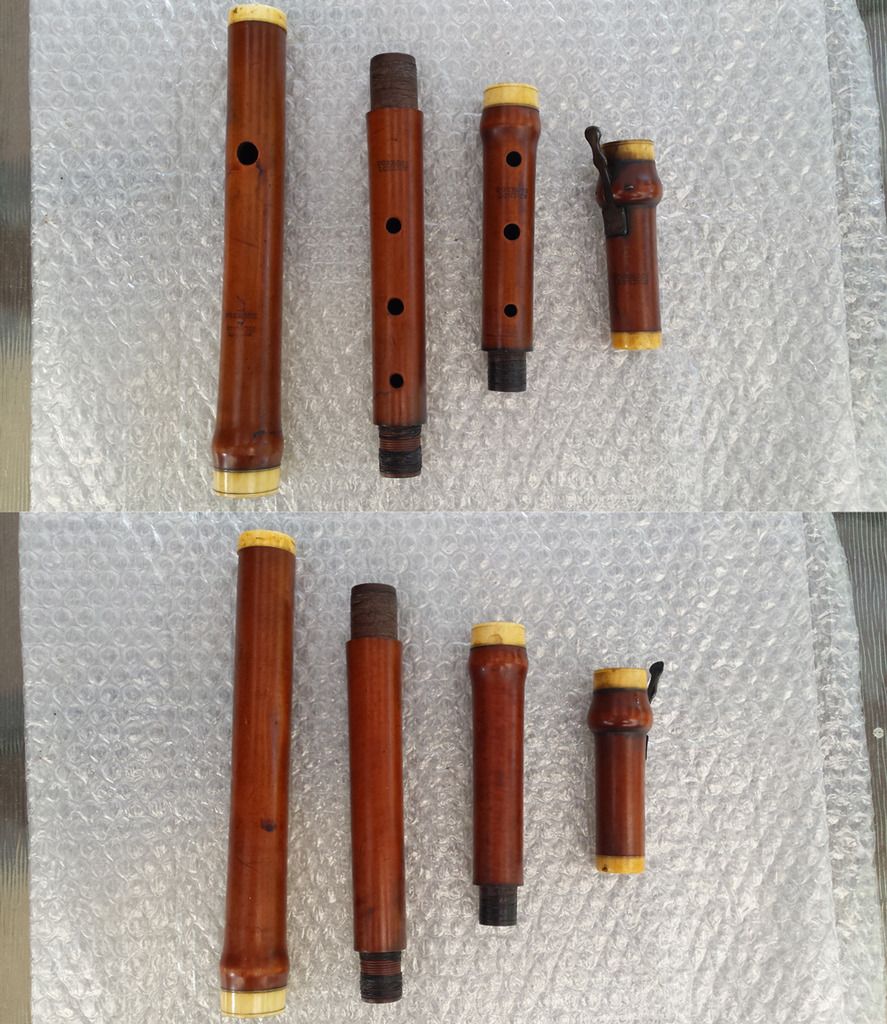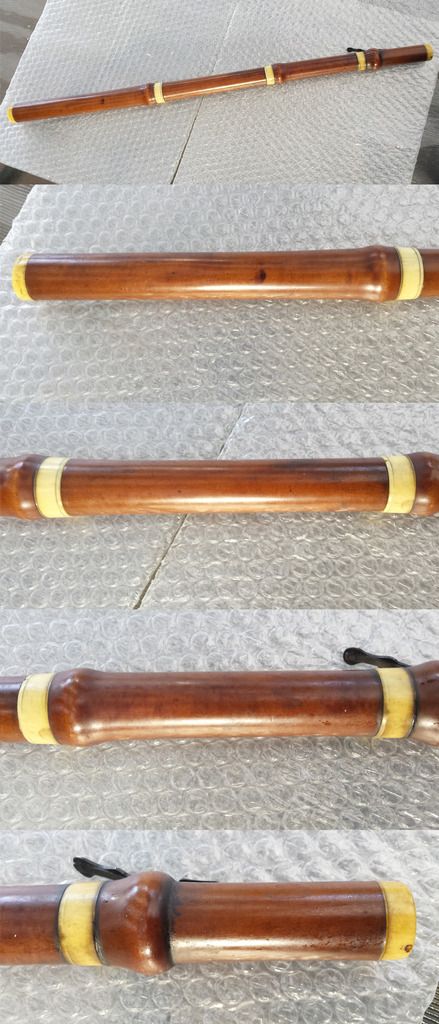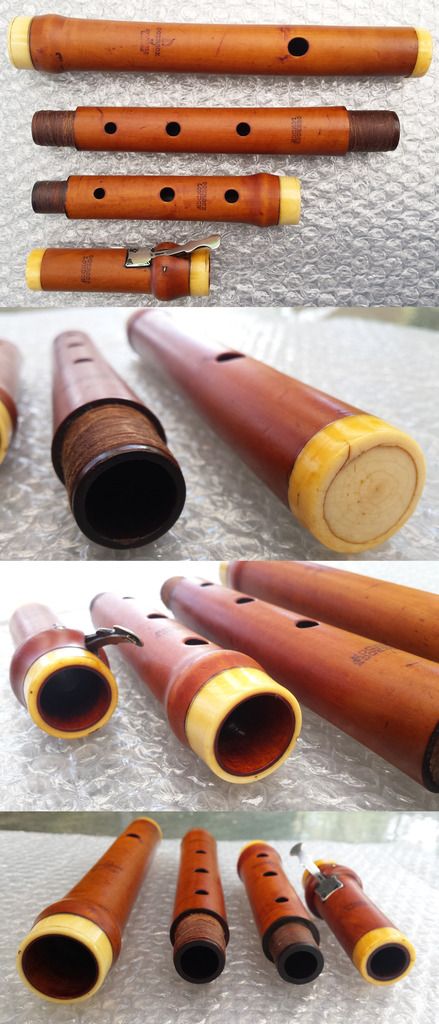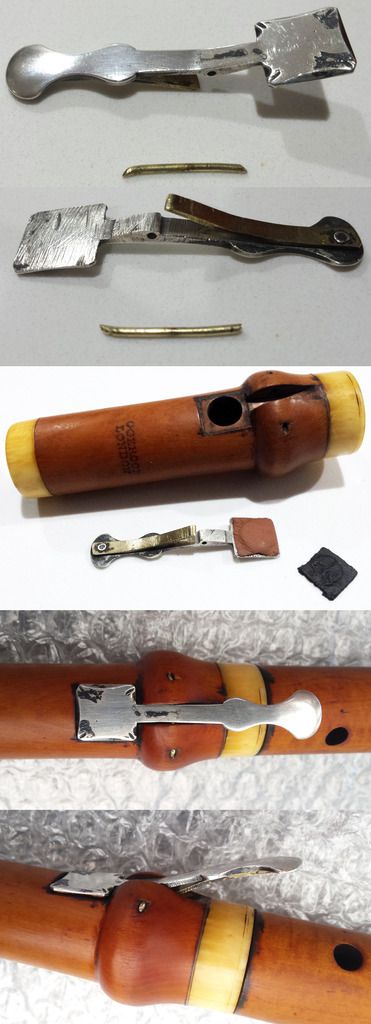
A few days prior to the auction I inspected the Gerock in person in Wollahra. I was surprised to find it played with a good sweet tone and quite loudly despite the tenon thread windings being horribly bunched up and near disintegration, the cork placed very well back and a dusty bore.
Overall condition considering its age was excellent. No visible cracks, repairs or modifications. Pitch was not accurately obtainable due to the upper tenon joint pulled out more than 20mm because of bunched tenon thread. Its overall length was approx. 600mm like most one-key Gerocks from the 79 Cornhill period (1826-1837 according to Lasocki) I could locate data for online.
The auction manager said it was most likely a one owner item since the 'prominent political family' who were auctioning it and many other contemporary pieces had been in Australia since colonial occupation but this was hardly proven just speculation.
He was mightily shocked when I played a rough D scale. He said two potential bidders had previously inspected it and declared it unplayable. Hmmm...
I decided it was well worth a punt. These flutes hardly ever turn up in Australia. And ivory restrictions make them hard to import. I've been tempted.
And so since the reserve was low, around £125, and no one else ended up bidding for it, my first traverso was shamefully cheap!
Once collecting it the next day and after removing some extra (crusty) thread from the tenons and adding cork grease I managed to assemble the Gerock properly and get some basic measurements:
Overall length = 605mm
Sounding length = 532mm
After warming it briefly with my hands the pitch was between A440 and 444 in my 21°C music room.
The cork is set quite far back (25mm+) but it plays octaves very much in tune so I'll leave it for now.
Headjoint stamped:
[Unicorn head]
C.GEROCK
79
CORNHILL
LONDON
All other joints stamped:
C.GEROCK
LONDON


Obviously it needs appropriate gentle cleansing inside and out. The bore is very dirty and dry. And needs to be played in gently and slowly. 5 minutes a day for few weeks tops.
From what I have played of it is quite lively! It has that thrum in the hands and fingers and a strong tone I wasn't expecting. The fork fingerings are particularly nice to have (G# and Fnat).
The Eb key has proved to be immensely tarnished silver. Amazingly its decrepit skin of leather or felt is still sealing the tonehole well enough along with the strongish flat spring.
The ivory is quite yellowed, and quite blackened under the key. I understand that ivory quite readily stains so I gather the silver key's tarnishing has badly stained it?
Any suggestions for cleaning the ivory are very much welcome. Seems little more than gentle polishing with the finest grade buff is recommended. I have Vulpex spirit soap and white spirits for the dirtiest regions of the exterior (again the footjoint because of the tarning silver key), but I need to do more research before applying anything to this flute. So far it's only had a wipe down with a mildly dampened cloth and thin wipe of sweet almond oil.
Any suggestions for materials to 'pad' the key with?
Leather? Cork? Felt? Other?
The Gerock is a nice, mechanically simple project after a few 'modern' Rudall flutes and various clarinets, but dealing with near-200 year old boxwood and ivory is daunting!
Vaughan
PS
Photo album here:
http://s1088.photobucket.com/user/dubro ... 20Traverso



